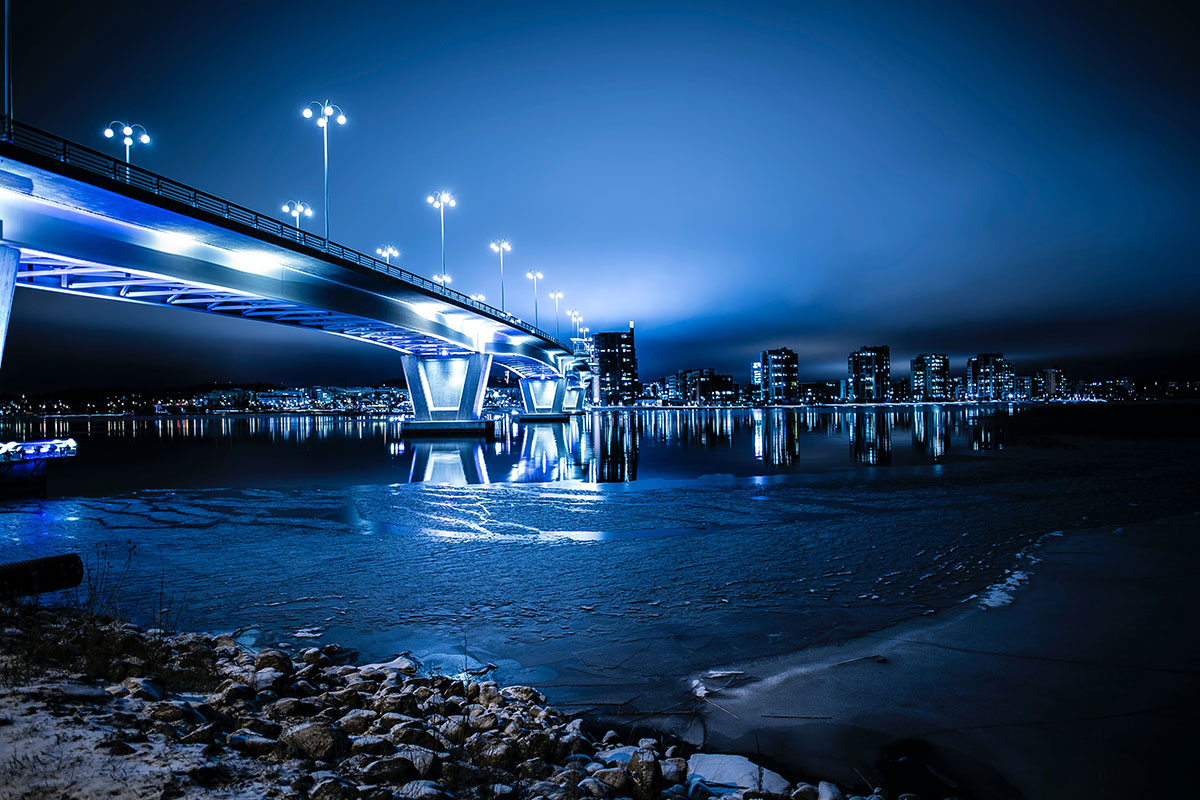
In the ever-evolving realm of web design, staying ahead of the curve is essential to create websites that not only catch the eye but also provide an optimal user experience. As we step into 2024, the digital landscape is set to witness a slew of innovative web design trends that promise to redefine the way we interact with the online world. Let’s delve into some exciting possibilities that may shape the future of web design.
1. Immersive 3D Experiences
With advancements in technology, 3D elements are poised to take centre stage in web design. Imagine a website where users can navigate through a three-dimensional space, exploring products or content in a way that feels almost tangible. This immersive experience can enhance engagement and create a lasting impression. From interactive 3D graphics to full-blown virtual reality (VR) integration, web designers will have new tools to craft captivating online environments.
2. Dynamic Dark Mode
Dark mode has gained popularity across various platforms, reducing eye strain and improving readability in low-light conditions. In 2024, we can expect an evolution of dark mode, with dynamic and customisable options. Users may have the ability to adjust the darkness levels based on their preferences, and websites could automatically adapt to the system-wide dark mode settings of the user’s device. This not only enhances user comfort but also adds a touch of personalisation to the browsing experience.
3. AI-Driven Personalisation
Artificial Intelligence (AI) is set to play a pivotal role in web design, offering personalised experiences tailored to individual users. Through machine learning algorithms, websites can analyse user behaviour, preferences, and interactions to dynamically adjust content, layout, and even colour schemes. This level of personalisation can significantly improve user engagement and conversion rates, providing a more relevant and enjoyable online journey.
4. Voice User Interface (VUI)
As voice-controlled devices become ubiquitous, integrating voice user interfaces into websites will be a logical progression. Users will be able to navigate websites, search for information, and even make transactions using voice commands. Web designers will need to consider not just the visual elements but also the auditory aspects of user interaction, ensuring a seamless and intuitive experience for those who prefer using their voice.
5. Micro-interactions for Enhanced Engagement
Micro-interactions are subtle animations or design elements that respond to user actions, providing feedback and enhancing the overall user experience. In 2024, we can expect an expansion of micro-interactions, making them more sophisticated and integral to the user journey. From animated button feedback to interactive loading sequences, these micro-interactions will add a layer of dynamism and playfulness to websites, making them more engaging and user-friendly.
6. Augmented Reality (AR) Integration
AR is set to bridge the gap between the digital and physical worlds, and web designers are likely to harness its potential for creating interactive and immersive experiences. Imagine trying out furniture in your living room before making a purchase or virtually exploring tourist destinations on a travel website. AR integration can revolutionise e-commerce, education, and various other sectors by bringing a new dimension to online interactions.
7. Biometric Authentication for Enhanced Security
With the increasing emphasis on online security, biometric authentication is expected to become a standard feature in web design. Fingerprint recognition, facial recognition, and other biometric measures will add an extra layer of protection to user accounts and sensitive information. This not only enhances security but also streamlines the login process, providing a seamless and efficient user experience.
8. Sustainable and Eco-Friendly Design Practices
As environmental awareness continues to grow, web designers will likely adopt more sustainable and eco-friendly design practices. This includes optimising websites for energy efficiency, minimising data usage, and using eco-conscious hosting solutions. Incorporating sustainability into web design not only aligns with global initiatives but also reflects a commitment to responsible digital practices.
9. Minimalistic and Functional Design
While minimalistic design is not a new concept, it continues to be a prominent trend, with a focus on functionality and simplicity. In 2024, we can anticipate even cleaner and more streamlined designs, prioritising essential elements and reducing clutter. This approach not only enhances the visual appeal but also improves website performance and user navigation.
10. Neomorphic Design for Depth and Realism
Neomorphic design, characterised by soft shadows, subtle gradients, and a sense of depth, is likely to gain popularity in 2024. This design trend mimics real-world elements, creating interfaces that appear tactile and interactive. Neomorphic design adds a touch of realism to digital experiences, making users feel more connected to the content on the screen.
Conclusion
As we step into 2024, the future of web design looks incredibly promising, with a fusion of cutting-edge technology, user-centric experiences, and a commitment to sustainability. From immersive 3D environments to AI-driven personalisation, the evolving landscape of web design holds the potential to transform the way we interact with the online world. Web designers and developers who embrace these trends will be at the forefront of creating digital experiences that captivate and inspire users in the years to come.


